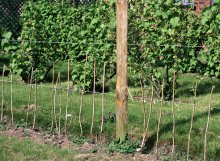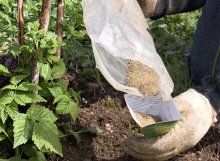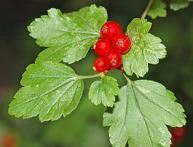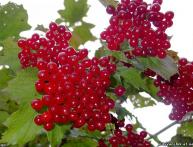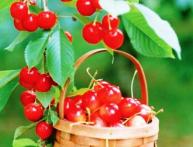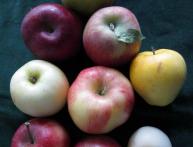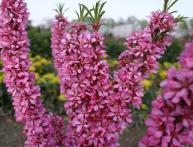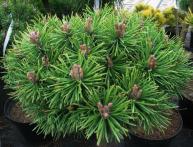What you need to know about feeding raspberries in spring
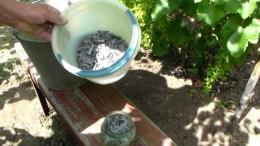
It is impossible to get a good raspberry harvest without a number of measures. Good raspberry tree care includes weed control, pruning, and fertilizing.
Contents:
- Preparing for the first feeding
- Diagnosis by appearance
- Organic feeding
- Mineral spring feeding of raspberries
Preparing for the first feeding
Spring fertilizing is a key procedure for obtaining a high-quality, abundant harvest. Before carrying out it, it is necessary to carry out preliminary preparation:
- Remove branches that have frozen over the winter.
- Collect leaves left over from autumn.
- Weed weeds that appear in the spring by hand so as not to damage the root system.
- Remember: the beginning of April is time for first feeding (provided there is sufficient moisture in the soil). At this time, it is advisable to apply nitrogen fertilizers of approximately 70-90 grams per square meter, sowing them on the soil around the bushes.
- Mulch with peat, compost or semi-decomposed manure. This will make it possible to retain moisture, earthworms will appear, which will make the soil loose and saturate it with air.
Diagnosis by appearance
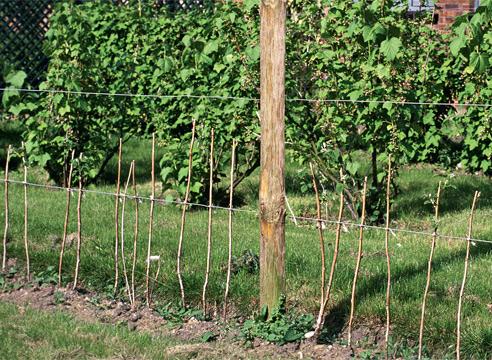
In a relationship subsequent feedings, then you need to observe the appearance of the leaves and shoots of the raspberries, they will be able to tell you exactly what substances the plants lack. Be alert to the following signals:
- If the raspberry leaves are small, faded, and have noticeably slowed growth, the plants do not have enough nitrogen.
- Huge dark green leaves indicate possible excess nitrogen availability, which can lead to a sharp decrease in yield levels. In such cases, unripe fruits simply fall off.
- When small yellowed leaves with dark veins, you should know that these are signs of iron deficiency in the soil.
- When the leaves slow down and begin to turn yellow from the middle to the edges, the plant tells you about a lack of magnesium.
- Weak, thin and pale shoots are evidence of phosphorus deficiency in the soil.
- If the leaves look as if they have burnt edges, then the plant is suffering from a potassium deficiency. There is also a risk of not surviving the winter.
- The pale tops of raspberry bushes indicate insufficient calcium in the soil.
By reacting in time to the signals that the plant gives, you can adjust the composition of the spring feeding of raspberries and manage to get a good harvest of berries. In addition, timely assistance will prepare the plant for further normal growth and development.
Organic feeding
An effective, environmentally friendly way to feed is to add organic matter in the spring. This can be a solution of mullein with water in a ratio of one to ten or bird droppings with water in a ratio of one to twenty.
As a mulch layer, you can make a covering of bone meal around the raspberry bushes in early spring.
It is good to use the ready-made Kemira preparation, three spoons of which should be diluted in ten liters of water. Water the raspberry bushes with this solution at the rate of one liter per bush.
Cheap and effective means for feeding is a weed tincture. To do this, you need to grind nettles and comfrey (it is preferable to take these plants, since they are rich in nitrogen and potassium).
Pour one kilogram of the mixture with ten liters of water and leave for a week and a half, stirring daily. You can add a little lemon balm or valerian to improve the aroma. Dilute the infused solution with water in a ratio of one to ten to fifteen and water the raspberry bushes (two liters per bush).
Tips from experienced gardeners:
- Apply organic matter on a cool, cloudy day.
- If the soil is dry, moisten it well before adding organic fertilizer.
- Avoid getting liquid organic solutions on the stems and leaves of plants.
- When you prepare a tincture from weeds or bird droppings, mullein, do not allow the container to be tightly closed; air access is required, otherwise the fermentation process will stop.
Fertilizing raspberries with organic substances in spring will have a positive effect on the size and quality of the berries of the future harvest; they will be larger and sweeter.
Mineral spring feeding of raspberries
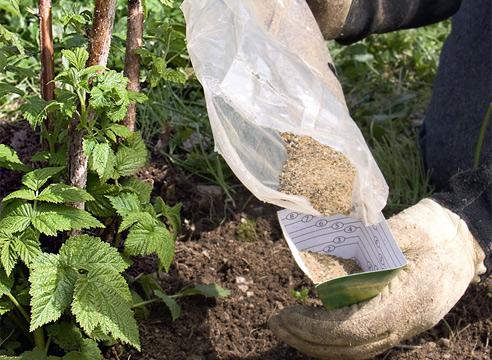
Mineral fertilizers must be applied in the spring to obtain the most positive effect on plants. Raspberries need phosphates, potassium and nitrogen salts.
Potash fertilizers can be successfully replaced with ash. It is nutritious, does not contain harmful substances, and is economical. Ash is applied in the spring at the rate of 100-150 g per square meter of area, both dry and in the form of a solution.
Nitrogen fertilizers It is recommended to apply in spring (15-18 g per square meter of area).
If you want to use complex mineral fertilizer, then it is prepared from ammonium nitrate, potassium and superphosphate in a ratio of 1:1:2. One hundred grams of the mixture is diluted with ten liters of water.
The use of such a complex of minerals can be carried out once in early spring or applied twice - at the beginning of spring and at the end.Experienced gardeners practice using mineral and organic fertilizers simultaneously, but constant monitoring of plant reactions is necessary.
If the raspberry yield exceeds one kilogram of berries per bush, fertilizing was carried out correctly.
Video about proper fertilization of raspberries:
Interesting information about the vegetable garden

